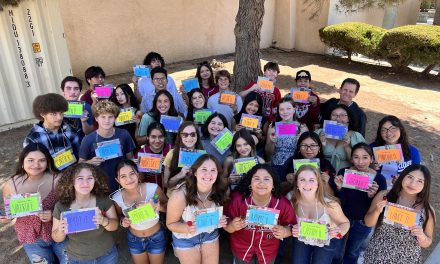Time and the Tide
The El Paso de Robles Historical Society presents “Time and the Tide,” an exhibit that will run through 2018 at the Historic Carnegie Library in the downtown City Park. Director of Research, Janice Cannon, introduced me to the story of local Native Americans, the Salinan tribe, who settled in southern Salinas Valley and along the Santa Lucia range on the Central Coast. This exhibit was first displayed at the Hearst Castle Visitors Center in San Simeon before moving to Mission San Antonio. The storyboards portray the Prehistoric Period, the Mission Period, the Gold Rush, Hearst Castle and the Military.
Archaeological excavation revealed evidence of this tribe at least 10,000 years ago. Through mission records, living tribal members have traced their genealogy to pre-mission villages on the Central Coast. According to the storyboards circling the Time and The Tide exhibit at the Carnegie, the theme is following the life of a Salinan woman, Agueda Agata. Agata is a descendant of the Hokan language-speaking people, considered to be the oldest language spoken in California. Follow her footsteps and those of her descendants as you go through time, through the exhibit, around the village sites of Tsitakak (San Simeon) and Holamna (Jolon). In 1778, at the age of 105, Agata died at Mission San Antonio. Her granddaughter, Margarita De Cortona, and her husband Juan Maria Ruiz, started a family of their own, continuing her lineage.
Prior to when the story begins, native people lived here for thousands of years. We start our journey in 1542, the time of Agata’s great grandparents, when there was evidence of Cabrillo visiting the Central Coast of California. Agata was born in 1673, a child of the San Simeon and Jolon areas. There was no development except for villages of tulle huts.
Centuries pass, the military takes over and many of Agata’s descendants are forced to leave their land once more. They are not allowed to visit ancestral lands and places held sacred. Other lands now owned by the U.S. military includes Stony Valley, a very sacred place to Agata and her descendants.
Appropriately, the tribe is now recognized by the State of California with a pending petition for federal recognition. The elected Tribal Business Council meets regularly to continue their educational effort and dedication to preserve and honor the tribe’s heritage. Now, during the winter and summer solstice, the tribe is legally able to ascend Morro Rock to follow in their ancestor’s tradition and light a fire on top of the symbolic rock. Because the Salinan tribe did not give up their fight for religious freedoms, it is their hope that other tribes will gain access to their sacred places in their native lands.
The internet offers interesting research, particularly from the organization’s website: Salinantribeofmontereyandslocounties.com. The images of native people reenacting the traditions of their culture are fascinating. Today, Donald Walter Pierce, is a member of the Salinan Tribe of San Luis Obispo Counties. His Native American heritage comes from his father with lineage dating back to the 1670’s. His hobbies including cutting rocks, making jewelry and knapping arrowheads; a craft learned from his grandmother and brother. Donald adds,” It is relaxing and challenging to see how each creation unfolds; the rewards are endless as my heritage emerges in the creations my hands have made.”














